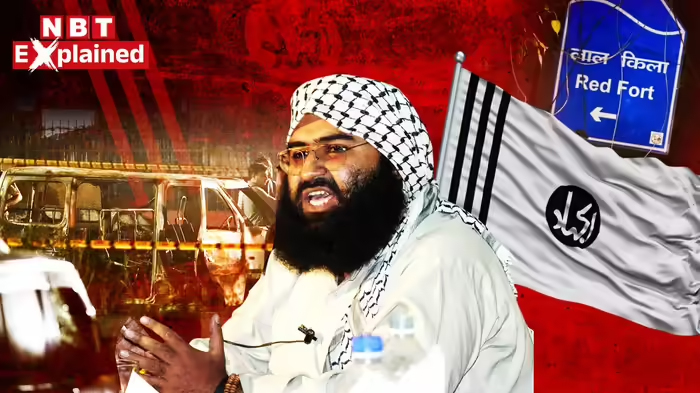
New Delhi, November 11, 2025 — Investigators probing the massive explosion near Delhi’s Red Fort say evidence is pointing to Pakistan-based terror group Jaish-e-Mohammed (JeM). Authorities allege a small module linked to the network — including medically trained persons — carried out reconnaissance and logistical work before the strike. As questions mount about how a reputed terror group turns doctors and educated professionals into attackers, here’s a clear, journalist-style summary of the organisation, its aims and its alleged recruitment and radicalisation methods.
JeM: a short profile
JeM, literally “Army of Muhammad”, was founded by Masood Azhar in the late 1990s. Over the years the group has been blamed for multiple high-casualty strikes in the subcontinent and is proscribed internationally. JeM’s stated objective is the separation of Kashmir from India; it has also explicitly targeted Indian, American and Israeli interests in its propaganda.
The Red Fort probe and the “doctor module”
Police and security agencies investigating the Red Fort explosion say some leads trace back to a small cell allegedly operating out of the National Capital region and nearby districts. Reports indicate that medically qualified individuals — doctors who travelled and conducted surveillance — figure in the inquiry. One of the vehicles involved reportedly carried out the explosion; law enforcement names and the final forensic conclusions are awaited as agencies continue search, seizures and questioning.
Authorities describe this as part of a broader trend: extremist networks increasingly seek recruits with specific skills (technical, medical, logistical) and exploit their access and credibility to further violent plots.
How extremist groups allegedly groom recruits — the non-technical picture
Intelligence and counter-terrorism analysts say violent Islamist groups such as JeM use a mix of traditional and modern tactics to radicalise and recruit:
- Religious framing and grievance narratives: Recruiters present violence as a religious duty in response to perceived injustices, offering a moral and spiritual justification for militant acts.
- Social and family networks: Many recruits are drawn in through trusted social circles — family members, classmates or religious communities — which reduces suspicion and eases mobilisation.
- Institutional grooming: Historically, some militant recruiters have used madrassas or training camps to inculcate ideology and basic paramilitary skills.
- Online outreach: Increasingly, groups deploy encrypted messaging, social-media content and “online jihadi schools” to radicalise wide, remote audiences — with material that glorifies past attackers and promises martyrdom as honour and reward.
- Targeted messaging for professionals: Propaganda tailored to professionals can emphasise a higher purpose for specialised skills, persuading educated recruits that their expertise will magnify the group’s impact.
- Promise of incentives: The rhetoric often pairs spiritual reward (martyrdom) with assurances of financial or social protection for families, making the offer more attractive to vulnerable individuals.
Crucially, reporting and official statements emphasise psychological and social pressure rather than one-size-fits-all “brainwashing” — radicalisation is usually a process involving gradual reinforcements and isolation from alternate viewpoints.
Why professional recruits worry security agencies
When trained professionals — doctors, engineers or technicians — are implicated, the threat profile changes: such recruits can provide technical know-how, logistical sophistication and credibility that make plots harder to detect and more lethal. Counter-terror agencies therefore prioritise monitoring networks where professional links and overseas contacts are visible.
What authorities are doing
Following the blast, multi-agency teams have been activated and forensic investigations intensified. Agencies are combining field intelligence, communications intercepts and financial tracking to map the alleged network and to identify handlers and overseas links. Public safety measures have been tightened and a high level of vigilance remains in the capital.
Discover more from SD NEWS agency
Subscribe to get the latest posts sent to your email.
